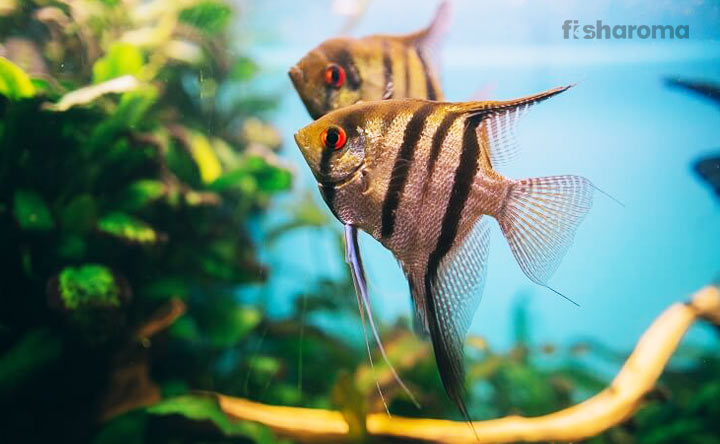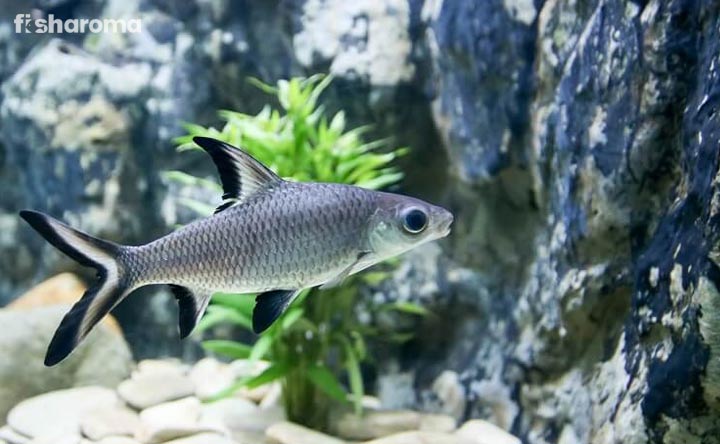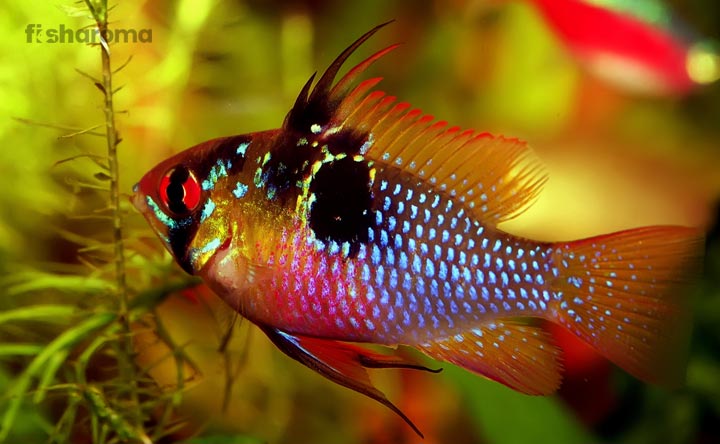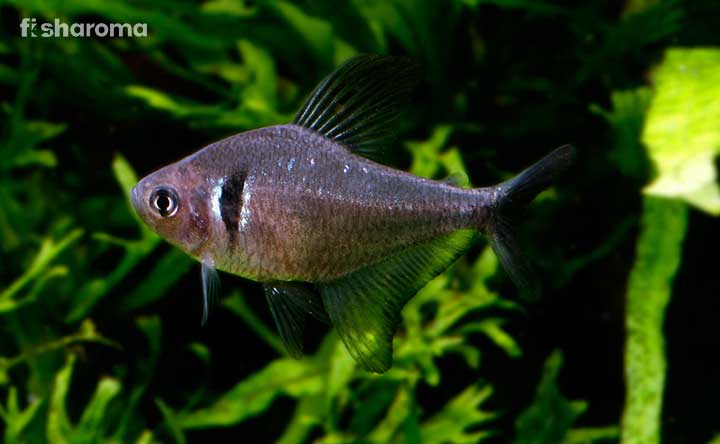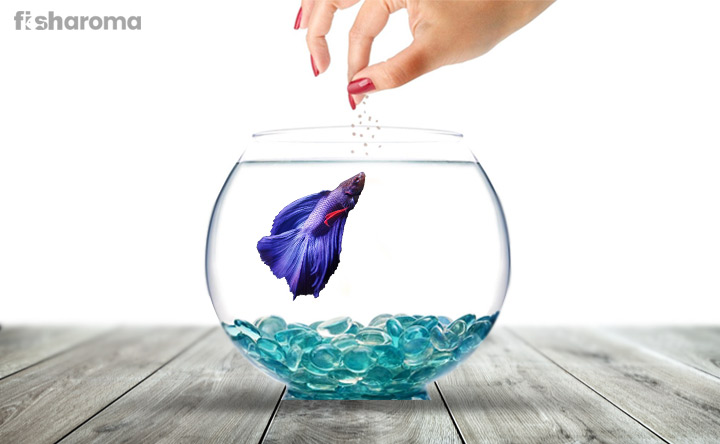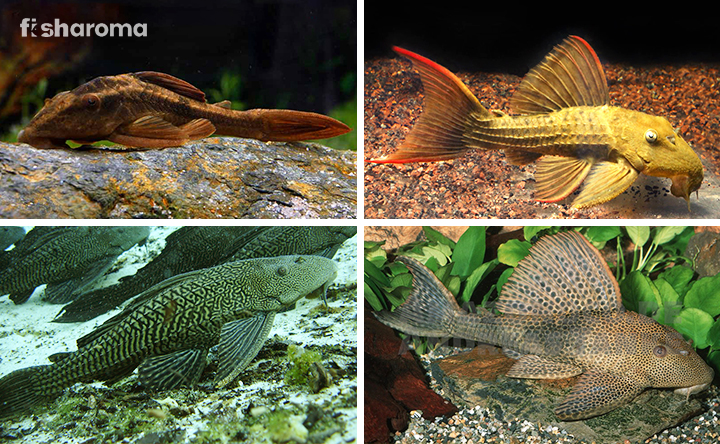Odessa Barb- Care Guide To This Magnificent Cyprinid

Odessa Barb is a small fish of colour and grace. This ornamental breed first appeared in the early 1970s and they seem to have gotten their name from Odessa, a place in Ukraine. These Barbs are from the genus Pethia, which is a group of small Barb fishes in the Southside of Asia.
All these facts aside, these fishes have just the thing you need in your very own collection. Let’s have a look, at what these ornamental freshwater beauties have to offer! Read on through our well-detailed care guide, and get your hands on every piece of information you need.
Key Specifications
Here goes a few key facts to see before you get started:
| Scientific Name | Pethia padamya |
| Origin | Central Myanmar |
| Lifespan | 3-5 years |
| Colours/Patterns | Beige or light base colour with a distinct red stripe, yellow-ish green fins and black spots. |
| Temperament | semi-aggressive |
| Size | 3 inches |
| Diet | Omnivorous |
| Family | Cyprinidae |
| Compatibility | Similar type of fish. |
| Tank size | 30 gallons |
| Care level | Easy |
| Water preference | Freshwater |
Overview
The magnificent Odessa Barb is a freshwater wonder from the Cyprinidae family. This Cyprinid originates from Central Myanmar. Known to be semi-aggressive, these fishes are easy to keep with a quite classic range of colourations and patterns all over their body. The care routine for these fishes is easy, as they are hardy and open to adapt with most parameters.
Origin and Habitat of Odessa Barb
The Odessa Barb fishes were mostly found above the Anisakan Falls, precisely the artificial pond located there. Other than that, they can also be discovered in masses in the lower Chindwin River. Conclusively, they, by origin, are majorly found in freshwater bodies like the rivers and ponds of Southeast Asia, Central Myanmar.
The surroundings of these Barbs should have plenty of vegetation with steady flowing water. In easier terms, by “steady flowing water” we mean medium current.
Appearance of Odessa Barb
Also known by the name of Scarlet Barb, the aesthetics of this fish is fascinating. The Odessa Barb collectively are known for their striking beauty, but the male variants showcase their palette better.
Colour
The male Odessa Barbs have a base colour of white, beige or silver with a pretty thick red stripe, splitting the body length pattern-wise, into two perfect halves. The stripe usually starts from the back part of the eye to all the way to the tail fin of the fish. Other than that, there are black spots. One is mostly right at the tail’s base or behind the gills. The alternate name Ruby Barb, originated from the distinct vibrant marking seen in males.
Females, however, have a more subdued and dim vibrancy intensity. A base colour of somewhat pink, hues of golden or silver with a similar sharp red line on top is seen, just like the male variants. There are similar black spots as well on the fins and all over the body of the Odessa Barb fishes.
Size
The Odessa Barbs have Sexual Dimorphism, so its quite easy to distinguish the two sexes. The female variants do have a generally more round body and are a little bigger in size. Mostly growing up to 3-5 inches in simultaneously captive and natural scenarios, they look flawless in the tank.
Behaviour of Odessa Barb
The unique Odessa Barbs are known to be active fishes. They love to entertain themselves and swim around the entire tank space, which is very interesting to observe. It is our suggestion to keep them in a school of five, as that is how these fishes tend to look the best, in their most natural self.
Categorized as semi-aggressive fishes, the only time you will see them show some sort of aggression in a species-specific tank, is towards the other males. This is their way of achieving a sense of dominance, against other males in the group. Around breeding time as well, you can sense slight aggression, however, it is a rare case scenario.
All in all, they are fishes of peace and activity. But one thing you must keep in mind is, they are fin nippers. So you will see harming behaviour the moment there are long-finned or slow moving fishes around. We suggest you to be careful, especially while pairing them in your dream tank. (More on that in the compatibility section)
Lifespan of Odessa Barb
These Barbs have a standard lifespan of 3-5 years. Provided that the water conditions are kept absolutely pristine, and other care factors are looked after, they live their lifespan with ease.
Diet of Odessa Barb
Odessa Barbs are omnivorous, so the choice of feeding comes with a lot of options.
Let us present a few great food options for our precious Barbs:
- Frozen fish-feedable
- Dried fish-feedable
- Live fish-feedable
Pellets and flakes from all three of the above-mentioned options. To be kept in mind, all of them should be high quality.
Other important choices:
- Lettuce
- Cucumber
- Daphnia
- Small Snails
- Bloodworms
- Brine Shrimp
Tank Requirements for Odessa Barb
Tank requirements are one of the most important things you need to look out for in fishkeeping. Keeping the requirements intact may sound like a mammoth task, but it is worth every bit of your energy and effort. The conditions you keep your fishes in, reflect upon the fish’s health. So let’s see exactly what you need to check:
Tank Lid
The Tank lid provides security to our precious fish in many ways. Not only does it stop a jumper or active swimmers like our very own Odessa Barb from falling to their deaths, they also prevent the water from pollution. Foreign particles can pretty much affect the water via exposure easily and a lid stops that from happening.
Tank Size
A Tank or aquarium size of at least 30 gallons, is necessary for a school of five Barbs of this variant to thrive.
Substrate
A medium pebble substrate is ideal for Odessa Barbs, for their habit of swimming fast through the tank. This sort of substrate allows the roots to breathe, and the size of the substrate is such that these Barbs will not try to feed on it.
Filter
They produce moderate amounts of waste, which increases as they grow. So a medium-strong filter works just fine with these. Filter keeps the water clean and safe for the fishes, along with their additional oxygenation quality.
Ornaments
The Odessa Barbs don’t really have massive tank decor or ornament needs. They like to have greenery intact, additionally if you throw in some driftwood to keep them jolly.
Lighting
The lighting in an Odessa Barb tank should be low, as they like it that way. Subdued lighting hits home for them, and proper emulation of the fish’s natural habitat is always our prime recommendation.
Presence of Flora
These Barbs love vegetation with all their heart. They prefer nothing more, than to actively swim about through the layers of vegetation. A good live plant option could be Water Wisteria, or plants like Hornwort (Horned Liverwort). But you need to keep this in mind, leave enough room besides all the other components, natural or not. This supports the fish’s active nature.
Cleaning Method
Tank cleaning or a proper cleaning method is a task of grave importance. No matter what you do, never forget to follow through with the cleaning schedule. However, these fishes produce moderate waste, a weekly water replacement or cleaning of the tank is necessary. Use a soft cotton cloth for the tank walls and make sure the parameters are all fine. Keep these key elements in mind, your fishes should be safe and sound all the way through.
Water Type for Odessa Barb
Maintenance of the proper water parameters is important. Let alone fish’s health, their entire life relies on how well you maintain the parameters they require.
So, let us simplify it for you:
| Hardness | 4-10 KH |
| Temperature | 21-26 Degrees Celsius |
| pH | 6.0-7.0 |
Hardness
A moderate water hardness is important. The carbonate hardness should be from 4-10 KH.
Temperature
The ideal required temperature is around 21-26 Degrees Celsius. Everything they require is balanced, so, that naturally does not fail to flourish in this department as well.
pH
A pH of 6.0-7.0 is required for our Odessa Barb. A lack of pH balance can seriously affect the health of the fish, so you have to handle things with care, while looking after our precious fish’s aquarium.
Compatibility of Odessa Barb
They are mostly compatible with fishes of similar nature. As we know, Odessa Barbs are really active beings. They do well in a species-specific tank, but there is aggression between the males, normally for the purpose of asserting dominance over the school or breeding. These well-known fin nippers definitely do not gel well with fishes who have extended flowing fins. Since they are fast, they can overwhelm slow swimmers too. Otherwise, they are generally compatible with community fish as long as their semi-aggressive part is taken care of, appropriately.
Suitable Tank mates
In order to provide you with a clear idea, let us check out some suitable tank mates for our magnificent breed:
- Tiger Barb
- Cherry Barb
- Zebrafish
- Swordtail Fish
- Neon Tetra
- Ember Tetra
- Bristlenose Pleco
- Apistogramma
- Chili Rasbora
Unsuitable Tank mates
Slow species or fishes with long fins are a strict no-no. Keeping that in mind, we’ve handpicked a few tank mates you must avoid around the time of choosing:
- Betta fish
- Fancy Goldfish
- Shrimp
- Snails
Breeding of Odessa Barb
When it comes to the breeding process of Odessa Barbs, make sure you have a separate tank for the purpose of breeding. These fishes are sexually dimorphic, so distinguishing the sexes is pretty easy. The ratio of females per male should be more to avoid any sort of potential mating aggression. Add some plants, perhaps, for the comfort of the pair.
While the process is taking place, the eggs are usually spread all over the space. The male follows the eggs and fertilizes them. However, once the process has achieved its completion, the parent specimens must be separated immediately. If that is not done on time, the parents tend to consume the entire lot of eggs. Additionally, they do not have parental instincts as such so their removal is the best course of action.
The eggs hatch in a short while, roughly about 3-4 days. Following this process, immediately feed the fry with feedable like baby brine shrimp, infusoria to enhance their growth and overall nutritional needs.
Diseases of Odessa Barb
Here goes a list of some common diseases that are capable of affecting our precious fish:
- Ich- Can be identified as “White Spot Disease”. They are known by the name of Ichthyophthirius multifiliis or “Ich”, caused as a result of a parasite. This disease is deadly for aquarium fishes.
- Columnaris– It is a serious freshwater fish disease which affects the gills and skin. It’s caused by a gram-negative, aerobic, rod-shaped bacterium called the “Flavobacterium columnare”.
- Dropsy- Fluid build-up within the tissues of the fish or inside the body’s cavity is what we call Dropsy in fishes. It’s a common freshwater fish disease that can point towards multiple other health issues like parasitic or bacterial infections, organ dysfunction (liver) and more.
Treatment
Some ways of treatment and prevention are as below:
- The unwell Odessa Barbs should be isolated in a separate treatment tank for further health-related decisions to come and appropriate medication.
- Try to be a quick detector of illness signs, that way they can receive on-time help from you or a vet.
- Always keep a sharp observation as neglect is fish’s biggest enemy. Monitor them from time to time and provide them with the attention they need.
- Do not let your fish get stressed under any circumstances.
- You need to maintain the tank water quality, so do not forget to keep an eye on the parameters.
Summary
To summarize it all, Odessa Barb is a fascinating breed of immense beauty and varied qualities. They are interesting to look at in the aquarium, so aesthetics is not all they have to offer. Not only is their keeping easy, but their ability to adapt also makes them tough. All in all, they are a fine blend of beauty, appeal and activity, making them a low-maintenance all-rounder worth each and every penny. Get a school of them in your tank, right now!
Similar Care Guides
- Black Ruby Barb Care Guide: This small freshwater species has a beautiful reddish black colouration. A very beautiful, yet beginner-friendly fish has a lot to offer. Know more right here!
- Gold Barb Care Guide: Their exquisite glaze is immaculate. Living for up to 7 years, these peaceful fishes are really unique in their own way. How? Look here.
- Cherry Barb Care Guide: These are tiny and vibrant fish species from the Cyprinidae family. Got a tank bigger than 20 gallons? We just have the right selection for you!

